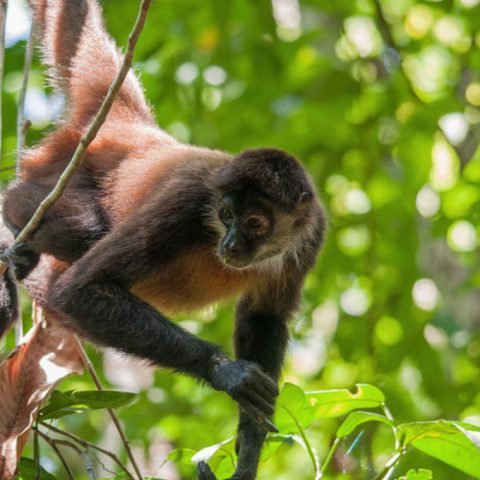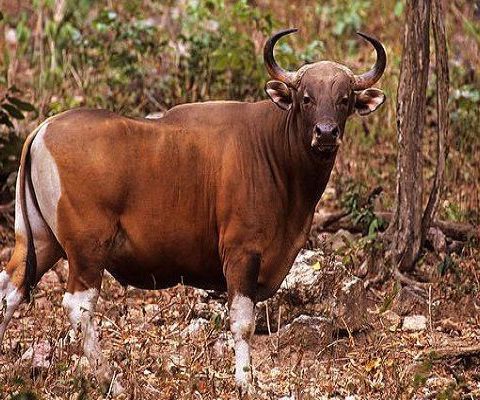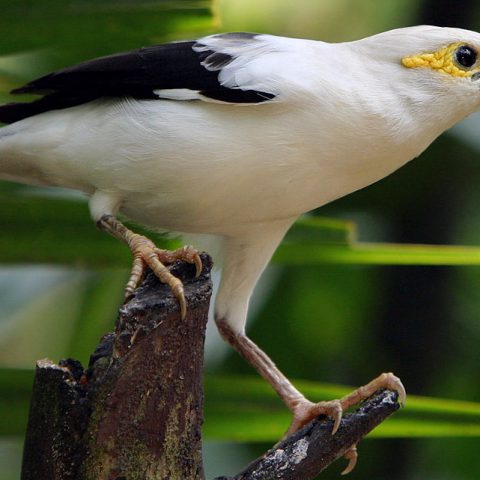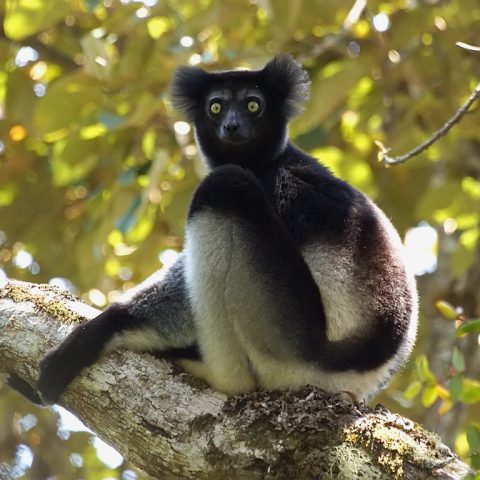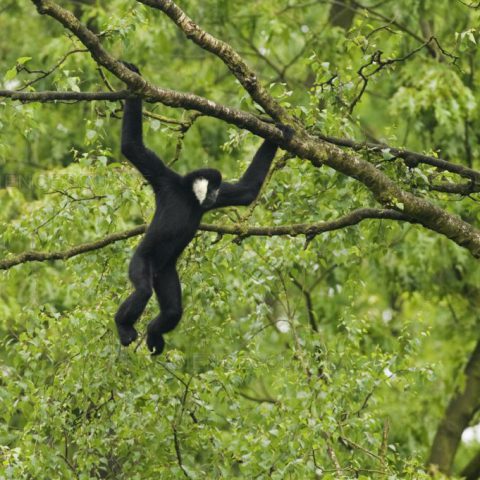Hainan Black Crested Gibbon
![]() Critically Endangered
Critically Endangered
Population
The current population is of 22 animals, one family of 11, another of 7 and 4 lone individuals
Size
The size of the species is around 49 centimetres in length
Weight
The weight of the species ranges between 5.8 to 10 kilograms
Countries
China
Distribution
The species is distributed only in small areas of Hainan Island in China.
Description
The Hainan Black Crested Gibbon is a species which is coloured differently for each sex. Males are generally completely black and have white or buff cheeks, while the females are a golden or buff colour all over with black patches including a streak of black on the head. The species is very slender and has long arms and legs, while not having a tail.


Quick Facts
Key behaviour of the Hainan Black Crested Gibbon includes:
- Female and Males are completely different colours
- The species sings duets from branches when bonding and mating
- The species has developed a polygynous relationships due to decreased natural habitat
- It has been observed that no sexually mature females are breeding in the wild
- The species indicates the health of the ecosystem on their island
- The species is critical for seed disposals of various plants
The diet of the Hainan Black Crested Gibbon is most made up of fruit and includes:
- Figs
- Lychee fruits
- Young leaves
- seeds
- flowers
- very rarely small insects
The primary habitat of the Hainan Black Crested Gibbon is in Old Growth Forest living in trees which are taller than 10 metres, but the species can be found in smaller secondary forests and dwarf forests, but these environments are not great for sustaining the species
The main threats that face the Hainan Black Crested Gibbon are:
- Loss of habitat – the primary forests are being encroached and destroyed by humans with 25% of the habitat being destroyed by illegal pulp paper plantations
- Poaching
- The species is at threat to being wiped out in a single epidemic or storm event due to the small population and area that they reside in
Conservation Efforts
The Kadoorie Conservation China and Fauna and Flora International organisations have performed surveys and are now taking action to help save this critically endangered species. Better equipiing patrols on the island and attempts to convert farmland to primary forests with figs and myrtles being planted are some of the actions being taken along with educating people in the area.



